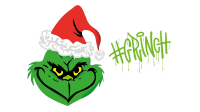The day before undergoing lifesaving, high-risk surgery, a young woman sat with her fiancé by her side. The charge nurse, who learned that they wanted to tie the knot before the surgery, quietly went into action. With the help of a social worker, chaplain, and volunteer services, the nurse made arrangements for everything—the ceremony, the rings, the veil, and even a disposable camera to capture the event. It was a special day for the couple and for the nurse who practiced her art of touching the lives of strangers.
Such stories are common among nurses, though not among the broader public. Nurses act with an inherent knowledge of what is right. They extend themselves with caring, empathy, and compassion to create helping, healing relationships with each patient. These actions exemplify aesthetic knowledge, one of the ways of knowing that best aligns with the art of nursing.
The dyad of art and science reflects patterns of knowing first described by Barbara Carper. Knowing is a cognitive process, and four patterns of knowing—empirical, ethical, personal, and aesthetic—characterize nursing. These patterns don’t exist in isolation. Nurses use them together and to varying degrees based on each situation.
Empirical knowing is factual and aligned with quantitative explanations. Ethical knowing draws on one’s moral values. Personal knowing relates to understanding and actualization of a relationship between a nurse and patient, while aesthetic knowing reflects the nurse’s perception of the patient and the patient’s needs. By synthesizing all this knowledge, the nurse develops a comprehensive perspective of the patient and provides excellent care.
Nurses demonstrate their professional commitment to expanding empirical knowledge by generating or using research findings to guide and establish best practices. The process requires critical examination of data or reported findings, understanding the data and the implications, and then making clinical decisions. The result is evidence-based practice.
Although evidence-based practice relies most heavily on empirical knowledge, it has links to the other ways of knowing. A nurse evaluates evidence using clinical judgment along with a consideration of values, such as patient centeredness, safety, and reliability. National reporting of patient outcomes and sharing of best practices are beginning to pay dividends, as nurses rapidly gain insight into alternative ways of achieving improved patient comfort, healing, emotional health, and risk-factor reduction.
As we celebrate nurses this May, let us help others recognize the scientific and the artistic aspects of nursing practice. Nurses enjoy feeling appreciated and respected. But appreciation and respect can’t be measured in the number of gifts from an employer or the number of meals crammed into a day of celebration. Real ongoing respect values the knowledge and ability needed to practice the art and science of nursing.
Respect and support for discovering methods to improve patient outcomes celebrate nursing excellence. Providing appropriate compensation, healthy work environments, and opportunities to enhance knowledge shows respect for nurses’ dedication and their multifaceted roles. Enjoying autonomy over practice demonstrates the kind of respect nurses deserve.
Of course, autonomy requires a responsibility to apply new knowledge to improve care through changes in practice. More and more clinical nurses are participating in research and generating new knowledge. Nurse scholars study not only clinical processes and outcomes, but also other aspects of the practice and delivery of nursing care.
American Nurse Today will increase its coverage of relevant and easy-to-translate research findings. My goal is to amplify the work of nurses who are increasingly playing an important part in saving lives and improving the quality of life. As we generate greater evidence and define best practices for more and more of the care we deliver, we will strengthen the public’s knowledge of the value of our care.
Pamela F. Cipriano, PhD, RN, FAAN
Editor-in-Chief

















